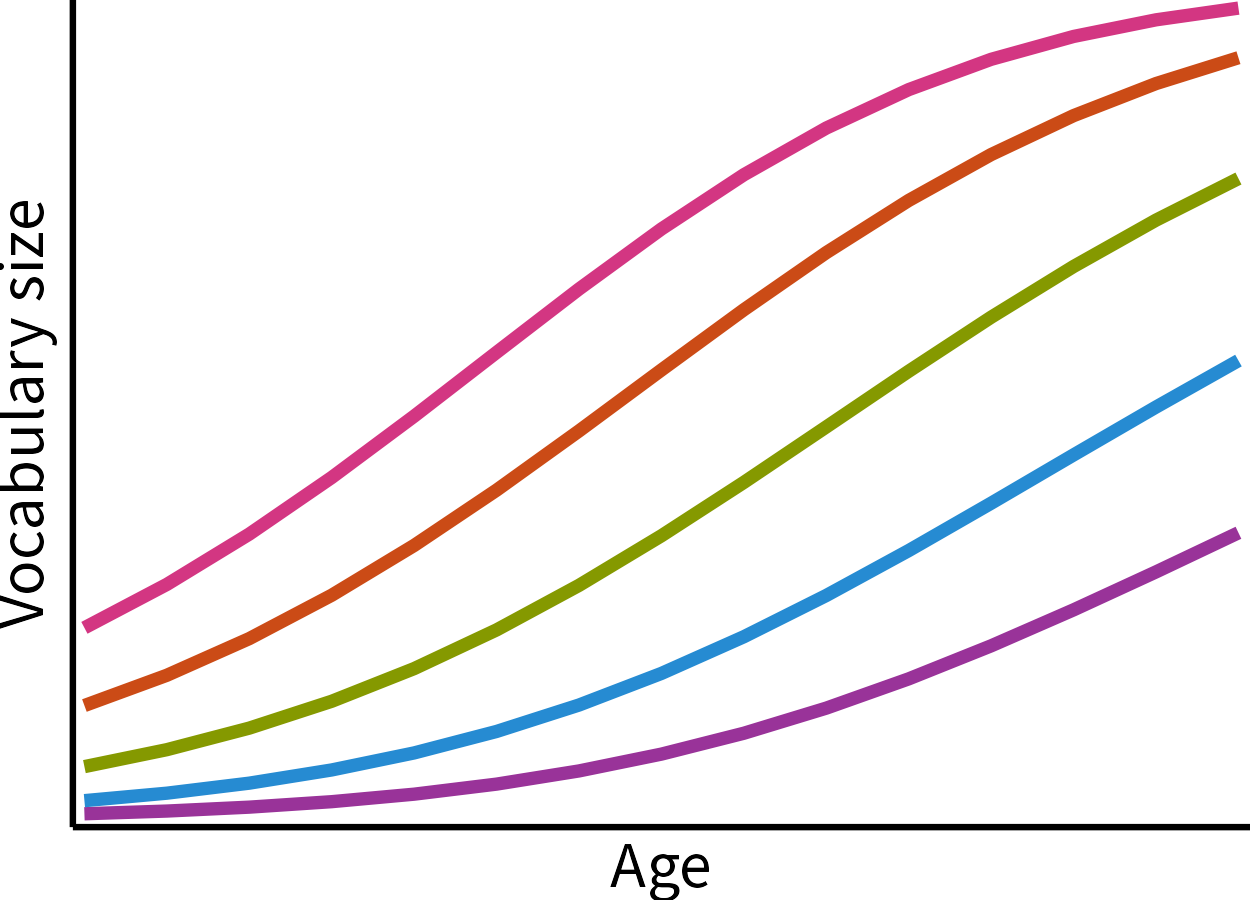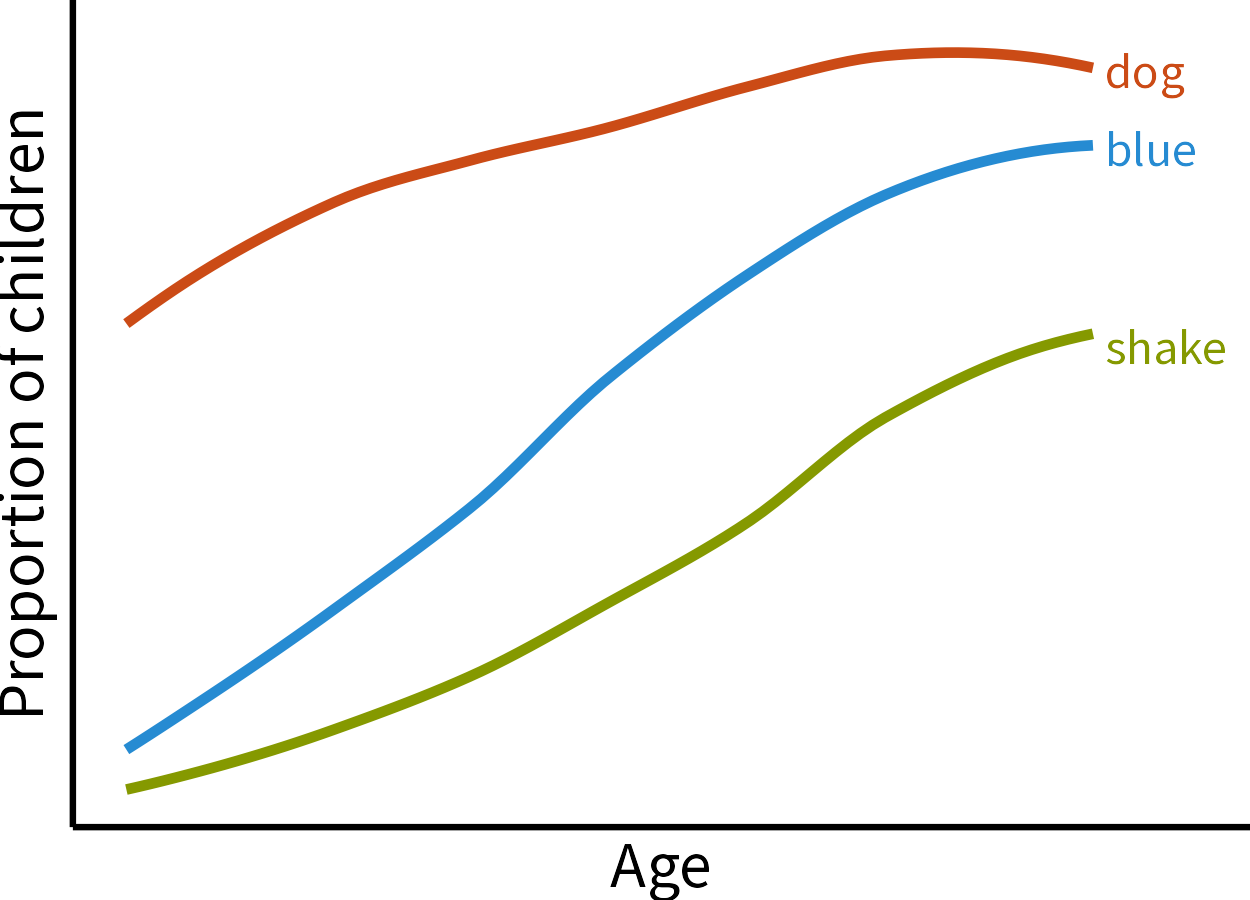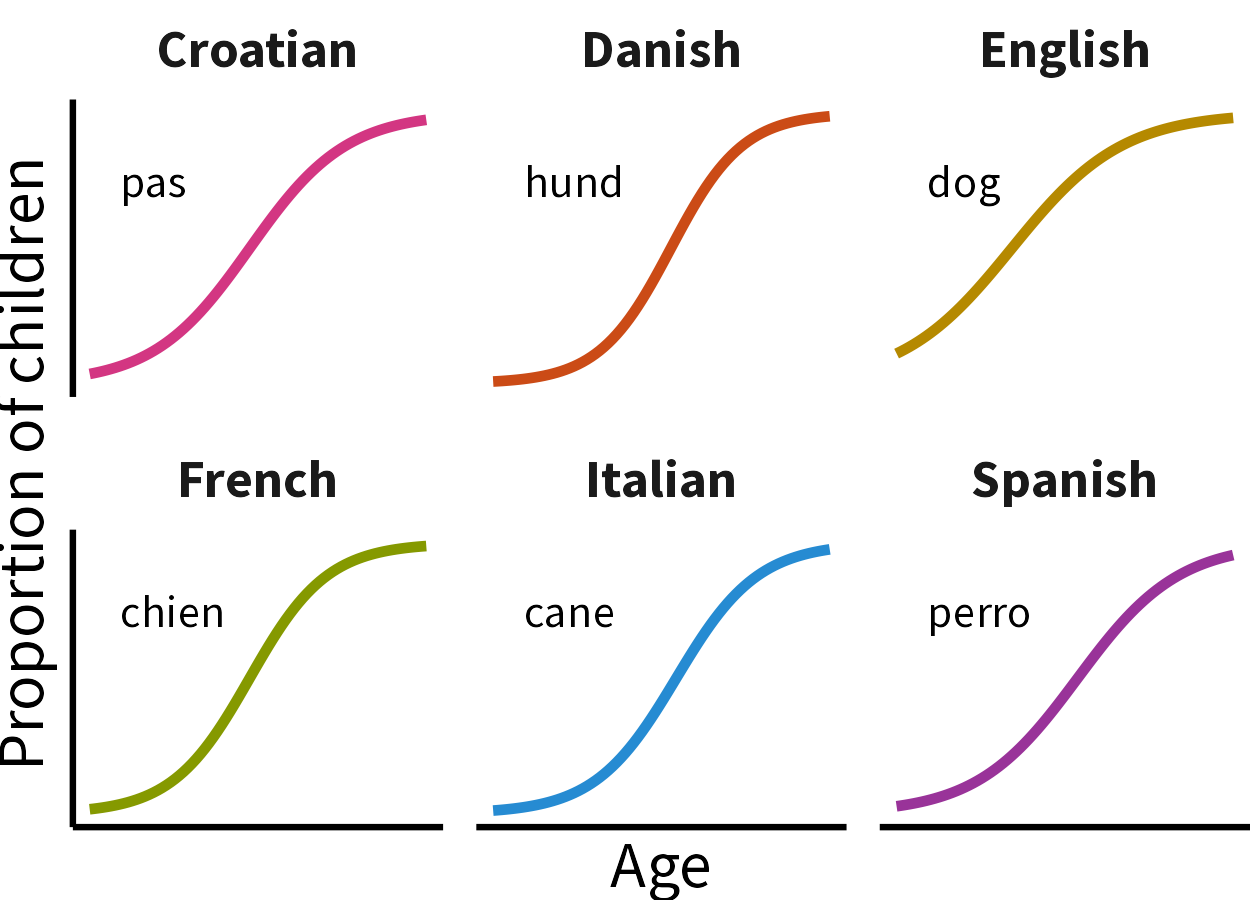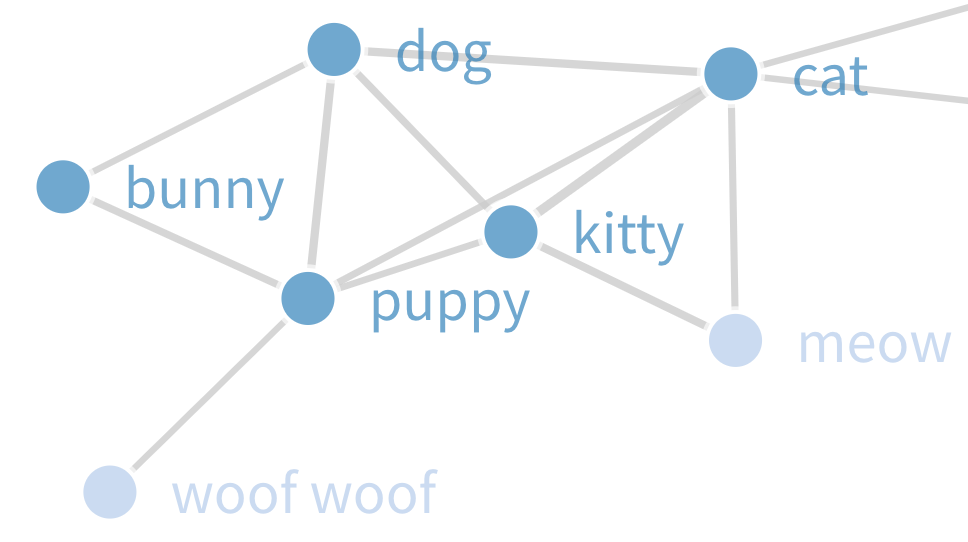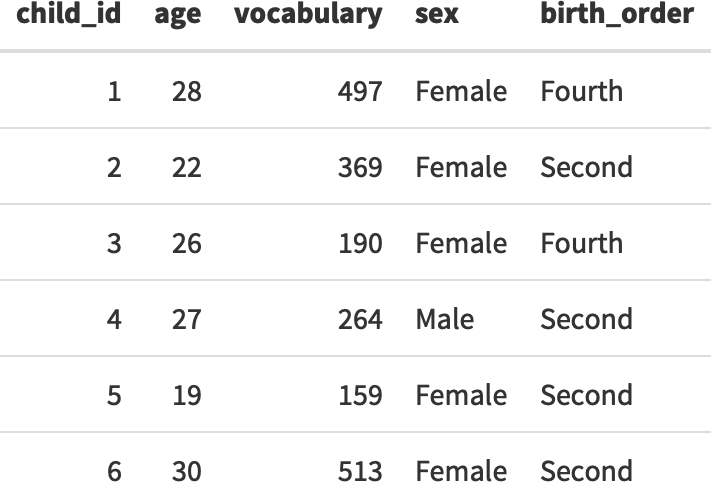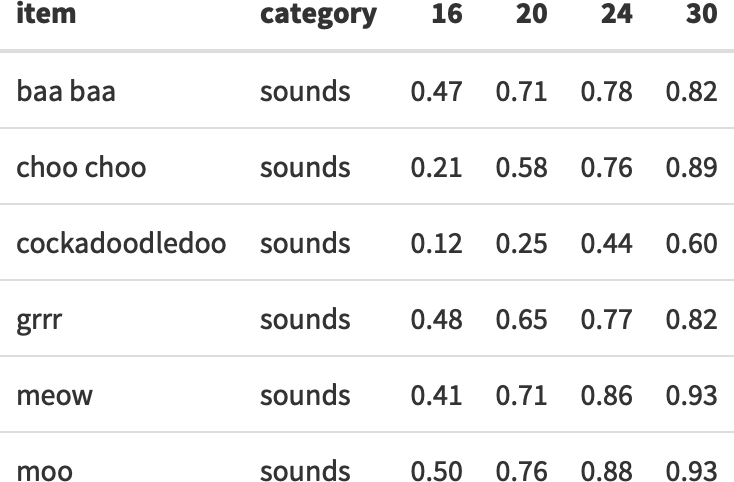Data
Wordbank Book
Interactive Visualizations and Analyses
Data Export Tools
Accessing data from Wordbank
-
Interactive apps
The apps above allow analyses of normative growth in vocabulary size and individual item trajectories. They also allow for download of several forms of tabular data. These apps cover some of the most common use cases for Wordbank data but not all.
-
Programmatic access
In addition to these apps, you can access Wordbank data using the wordbankr R package. There is a data access tutorial for wordbankr available here. The R package is the most flexible way to work with data from the database.
-
Wordbank book
If you are interested in item- and group-related analyses of the Wordbank data that are not available through the Shiny apps, it may also be helpful to identify the relevant analysis in the Wordbank book and look at the code for those analyses.
-
Previous versions
Periodic snapshots of the Wordbank database are available for download. For instructions on how to access them, see here.
About Wordbank infrastructure
-
Wordbank is a MySQL database and built using Django
github.com/langcog/wordbank - Wordbank's interactive reports are created using Shiny github.com/langcog/wordbank-shiny
- The wordbankr package is written in R and tidyverse github.com/langcog/wordbankr
Unilemmas
Teaching
